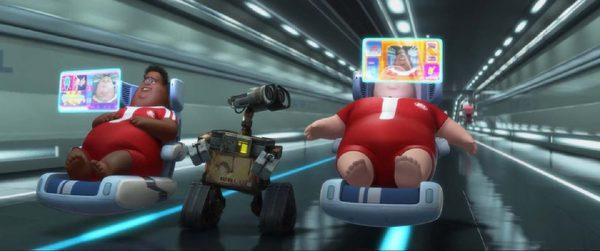Strawberry picking robots, winning users and societal challenges.
This week returns to strawberry picking robots, overcoming inertia to win users and the challenges of user generated content for children and wider.
This week returns to strawberry picking robots, overcoming inertia to win users and the challenges of user generated content for children and wider society. A rather wide ranging newsletter this week then.
Picking strawberries.

When we held our entrepreneurship event for the London Symposium (an event which celebrates UK business) a few years ago, the focus was very much on robotics and AI.
One company showcasing their wares was the Shadow Robot Company which was looking to build robots that could pick strawberries. Not as easy a task as you might imagine and requires both clever hardware and software.
Something like this is tough because it is not something you can just tell a robot to do. There are too many variations. Instead a robot needs to be taught the fundamentals and then work out the best approach itself.
Embodied Intelligence, which has just come out of stealth aims to take this very approach. It does so by mimicking a human and learning from each interaction.
Eventually it will have done something enough times to figure out the best approach itself. A solid approach albeit one that is still much much slower than teaching even a baby. It seems to require a clean environment as well right now so I’m not entirely sure it is up to the task of picking strawberries yet. One step at a time though..
More on Embodied Intelligence’s approach here.
Overcoming inertia to succeed.

Inertia. Never underestimate it. If you want someone to switch from one thing to another you need to overcome it and something that you use everyday requires something big to succeed.
When Hotmail launched webmail in the mid 90s, most people were stuck with their ISP email accounts. Awful to use and difficult to access anywhere there wasn’t much inertia.
So with a big advantage and excellent marketing Hotmail became extremely popular despite heavy competition from copycats. Its viral marketing was so superior that it is still used today as an example of how viral marketing can succeed.
It was not till 2004, that someone figured out a way to overcome that inertia again. Gmail announced to much disbelief that it would give away 1 GB of space to everyone who uses its platform. It also dropped the idea of folders and introduced search. Enough to overcome inertia and woo a lot people away.
Fast forward to today though and there doesn’t seem to be much reason to switch email provider (at least so far). AOL launched Alto back in 2010, which was a nice clean email client, easy to use and with clever features. In some ways it was similar to Google’s Inbox client, which takes a similar approach of group together types of messaging and aims to streamline the email experience. Some love it, some hate it. Regardless it clearly was not enough to persuade people to switch and as a result it is shutting down on December 10th.
The next generation email client is not dead though and I suspect we are on the cusp of a new type of email client. One that integrates with smart assistants and will make email easier to deal with. One day..
What are we doing..

Bringing up children is wrought with challenges. The world is never the same as when we were brought up so new decisions have to be made. Is the same approach as when we were younger the right approach or should a different path be taken. If a different path is taken what doe that do to other decisions? Challenging indeed.
One (obvious) huge area of change is the amount of technology available to children today. Whilst screentime is always a concern, I seem to remember being hounded away from the TV when I was young so actually this is not such a new problem.
It is actually what is on those screens that is creating the biggest challenge.
The ability to find almost any content you need on YouTube has meant that children get introduced to YouTube very early on. This is as a direct result of YouTube allowing anyone to upload content.
By removing the friction of publishers and TV channels from the mix, any creator can quickly meet the desires of an individual.
The downside it that this can be abused and technology which understands content is not as good as the technology which creates content.
So today, when it comes to apps like YouTube Kids, which visibly sounds like a YouTube safe for kids, is not really. It is not a human curated channel and means that sometimes the technology filters get things wrong.
Is that OK? At what age does it become OK? It all depends on the content, which in turn means that initially supervision and eventually teaching children to be both self-aware and understand core concepts is even more critical. This is nothing new though.
Eventually, technology filtering will catch up and then we have bigger questions to answer. This is just one more strand of a bigger problem where content appears that we (as a society) do not want it to. The obvious example today is fake news - but already this has become more broadly defined as content someone does not agree with. At some point we are going to have to define what should and should not be filtered before we drift too far towards censorship.
James Bridle has written up an excellent and detailed article looking at content targeted at kids, how automation is being used and how it is all having an impact on not just kids but the wider society. Read it here.
About Riaz

I've spent over 20 years building and scaling B2B products, services and marketing technology - from early-stage startups through to exits, and now as CEO of Radiate B2B - the B2B ad platform.
Along the way I've led teams, launched products, built and sold companies, and spoken around the world about data, AI and the future of marketing and work.
Today I split my time between working directly with companies as a consultant and fractional operator, mentoring founders and leaders, and speaking to audiences who need someone to translate what's happening in technology into decisions they can act on.
Read the full storyRecommended posts

Artificial intelligence more profound than electricity or fire.
We already know one soundbite from Sundar in the interview: Artificial intelligence will be more profound than electricity or fire.
Read more
2018 - the death of the chatbot?
So if smart assistants are the future and not chatbots, is this the end of the chatbot?
Read more
The future of innovation, startups and the world. That's all.
I'll reflect on both in the next week or so I suspect but this week's newsletter looks at innovation, the business of looking into the future, how.
Read more